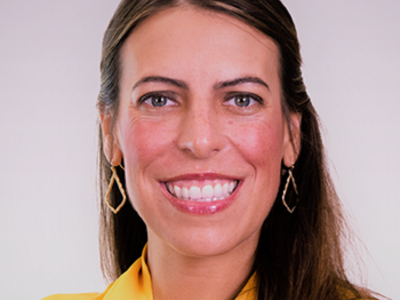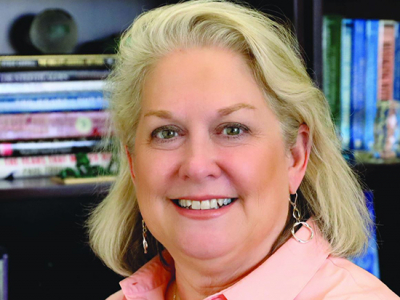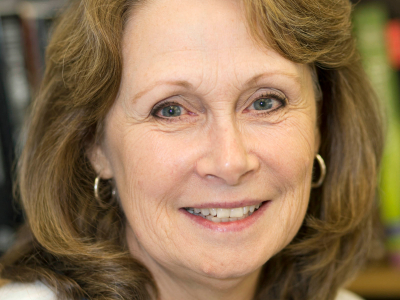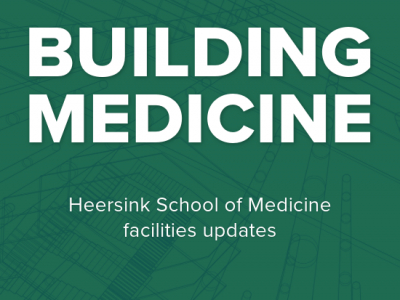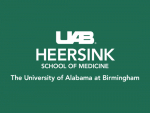AI in Medicine Graduate Certificate
Written by Mariah Payne
The Marnix E. Heersink Institute for Biomedical Innovation offers an AI in Medicine Graduate Certificate to meet the growing impact of artificial intelligence in academic medicine. Stevan Fairburn, a UAB MS2 student currently enrolled in the program, met with the Heersink communications team to shed some light on the certificate program and its curriculum.
Unlocking conflict resolution during the next Staff Grand Rounds
Written by UAB Heersink School of Medicine News
The Office for Diversity and Inclusion is excited to host the next Staff Grand Rounds session featuring UAB’s University Ombudsperson. Michelle R. Horvath, J.D., will discuss practical strategies to navigate workplace conflicts effectively.
Marnix E. Heersink Institute for Biomedical Innovation, Grand Rounds: Leadership to Accelerate Healthcare's Digital Transformation
Written by Kayla GibsonThe Marnix E. Heersink Institute for Biomedical Innovation held a Grand Rounds presentation with speaker Christy Harris Lemak, PhD., Professor in the Department of Health Services Administration in the School of Health Professions at the University of Alabama at Birmingham, on Tuesday, April 2.
In the intricate landscape of cellular biology, a group of dedicated Heersink investigators is unraveling the mysteries of protein glycosylation, particularly focusing on the enigmatic world of sialylation. Led by Susan Bellis, Ph.D., the Glycobiology group at UAB delves deep into the significance of sialic acid modifications and their profound impact on cellular behavior. As we sat down with Bellis, she shared valuable insights into the group's pioneering work and its pivotal role in shaping our understanding of glycobiology.
In April, the Heersink School of Medicine Office for Diversity and Inclusion proudly commemorates the contributions and achievements of Arab Americans in the field of medicine and science.
Building Medicine: Updates on Heersink School of Medicine facilities, Q2
Written by UAB Heersink School of Medicine News
In this second quarterly space and facilities article, we will focus on space assignment and space management. The Heersink School of Medicine has roughly 1.8 million square feet to manage, fund, and account for across 60 campus buildings, and the school is the predominant occupant in over 20 of the facilities. Most of the school’s space [85%+] is assigned to our academic departments, while the remainder is assigned to the Dean’s Office, Medical Education, regional campuses, Heersink institutes, and institutional research cores. All assignable space is organized into three main categories: administrative space, clinical research space, and basic research space; these groups account for 54%, 8%, and 38% of the school’s total space footprint, respectively.
UAB Orthopaedic Surgery and Sports & Exercise Medicine support nutrition program for local student athletes
Written by Shawna Masters
In Birmingham, Alabama, the commitment to fostering the potential of young athletes extends far beyond the playing field. Thanks to the initiative spearheaded by James Jones, head athletic trainer for the UAB Department of Orthopaedic Surgery and Birmingham City Schools, and Bama Wellness Advocacy, and from the financial support provided by the UAB Department of Orthopaedic Surgery and UAB Sports & Exercise Medicine, a revolutionary nutrition program has been launched. This program not only emphasizes the significance of proper nutrition but also highlights the importance of self-wellness factors such as sleep, ultimately aiming to enhance the overall performance and well-being of student-athletes.
UAB residents, fellows, and faculty gain access to AMA GME Competency Software online resource
Written by Phillip PinyanThe UAB Graduate Medical Education office is now offering its residents, fellows, and faculty a new training opportunity through the American Medical Association (AMA). The piloting of the AMA GME Competency Software in September 2023 was made possible by medical education funding through a HRSA grant.

